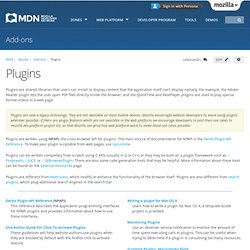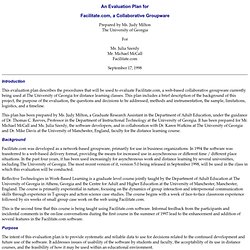

Infolab.stanford.edu/~wangz/project/imsearch/review/JOUR/datta.pdf. Groups.csail.mit.edu/vision/vip/papers/yeh_cvpr04.pdf. Browser Plugins vs Extensions – the difference. Overloaded terms One of the least understood concepts in the Browser Plugin world is — browser plugins.

What they are, and even more: what they are not. Probably at least once a week I answer a question somewhere on a forum or on the comments on this blog and say “You can’t do that with a plugin; you need an extension”. Many people confuse plugins and extensions in the browser world. They sound like they should be the same thing, but in fact they are very different. What you can do with a plugin A plugin is, quite simply, a third party library that “plugs in” to the browser that can be embedded inside a web page using an <embed> tag or a <object> tag. Examples of common plugins include: Macromedia FlashMicrosoft SilverlightApple QuicktimeAdobe Reader (at least this includes a plugin in addition to the rest of the application) Some plugins respond to a mime type and can run in place of the page, such as Adobe Reader, which allows you to view PDF files in your web browser.
“But wait!” Why? Plugins. Plugins are shared libraries that users can install to display content that the application itself can't display natively.

For example, the Adobe Reader plugin lets the user open PDF files directly inside the browser, and the QuickTime and RealPlayer plugins are used to play special format videos in a web page. Plugins are now a legacy technology. They are not available on most mobile devices. Mozilla encourages website developers to avoid using plugins wherever possible. If there are plugin features which are not available in the web platform, we encourage developers to post their use cases to mozilla.dev.platform project list, so that Mozilla can prioritize web platform work to make those use cases possible.
Plugins are written using NPAPI, the cross-browser API for plugins. Plugins can be written completely from scratch using C APIs (usually in C or C++) or they may be built on a plugin framework such as Firebreath, JUCE, or QtBrowserPlugin. Writing a plugin for Mac OS X. Evaluation plan. An Evaluation Plan for Facilitate.com, a Collaborative Groupware Prepared by Ms.

Judy MiltonThe University of Georgia For Ms. September 17, 1998 Introduction This evaluation plan describes the procedures that will be used to evaluate Facilitate.com, a web-based collaborative groupware currently being used at The University of Georgia for distance learning classes. This plan has been prepared by Ms. Background Facilitate.com was developed as a network-based groupware, primarily for use in business organizations.
Reflective Technologies in Work-Based Learning is a graduate level course jointly taught by the Department of Adult Education at The University of Georgia in Athens, Georgia and the Centre for Adult and Higher Education at the University of Manchester, Manchester, England. This is the second time that this course is being taught using Facilitate.com software. Purpose Goals The goals of this evaluation are to: Questions This evaluation plan is designed to answer these questions: Audiences.